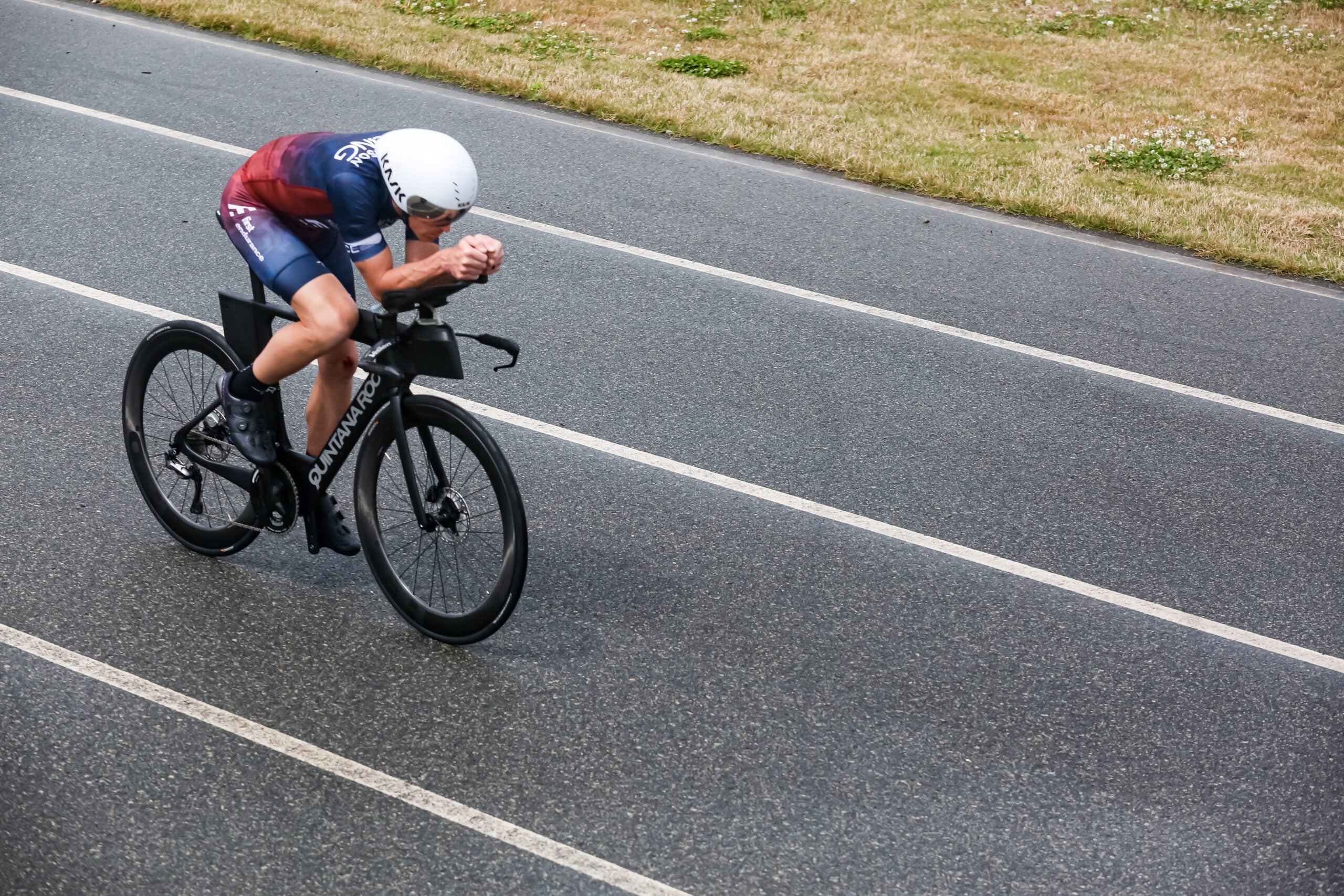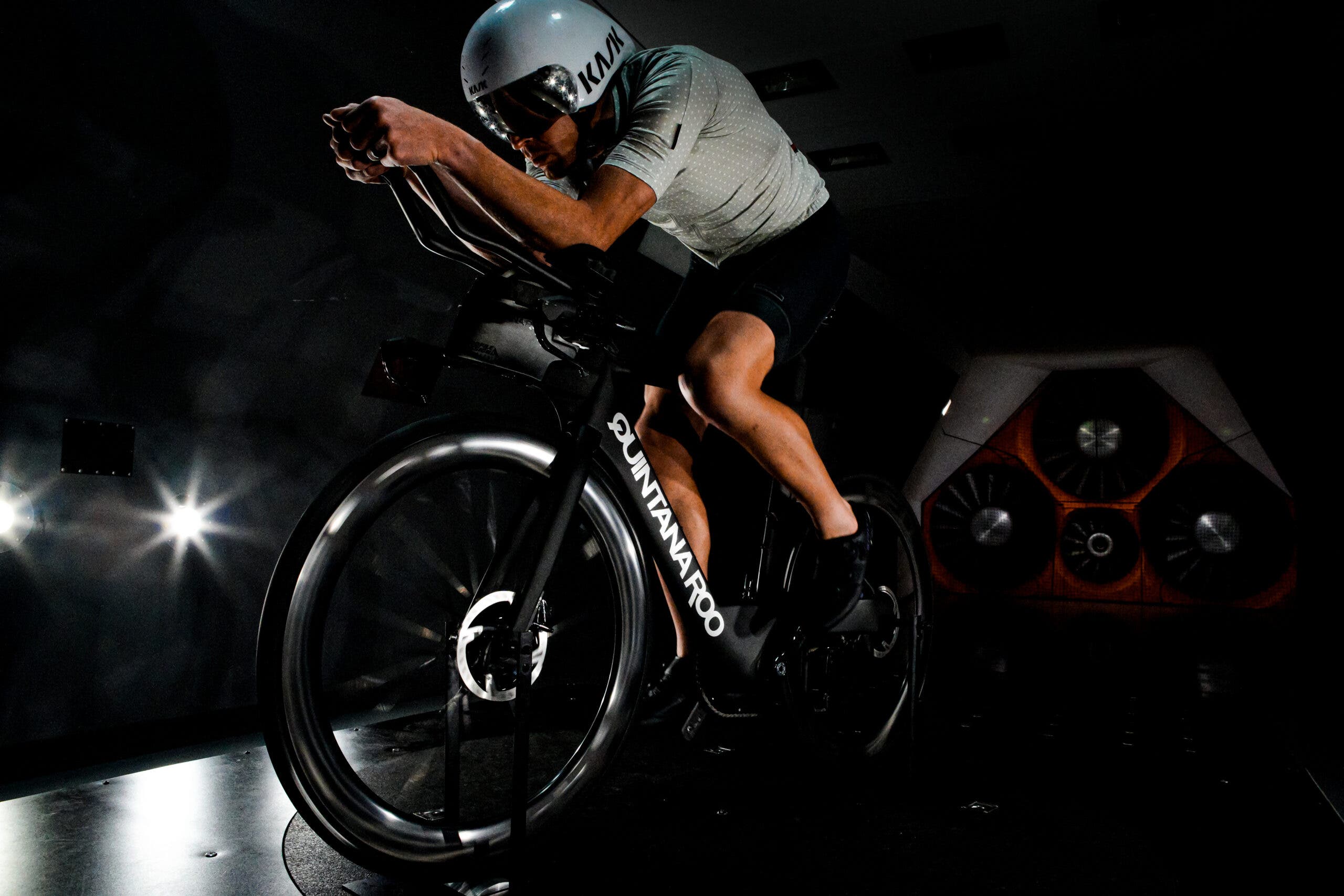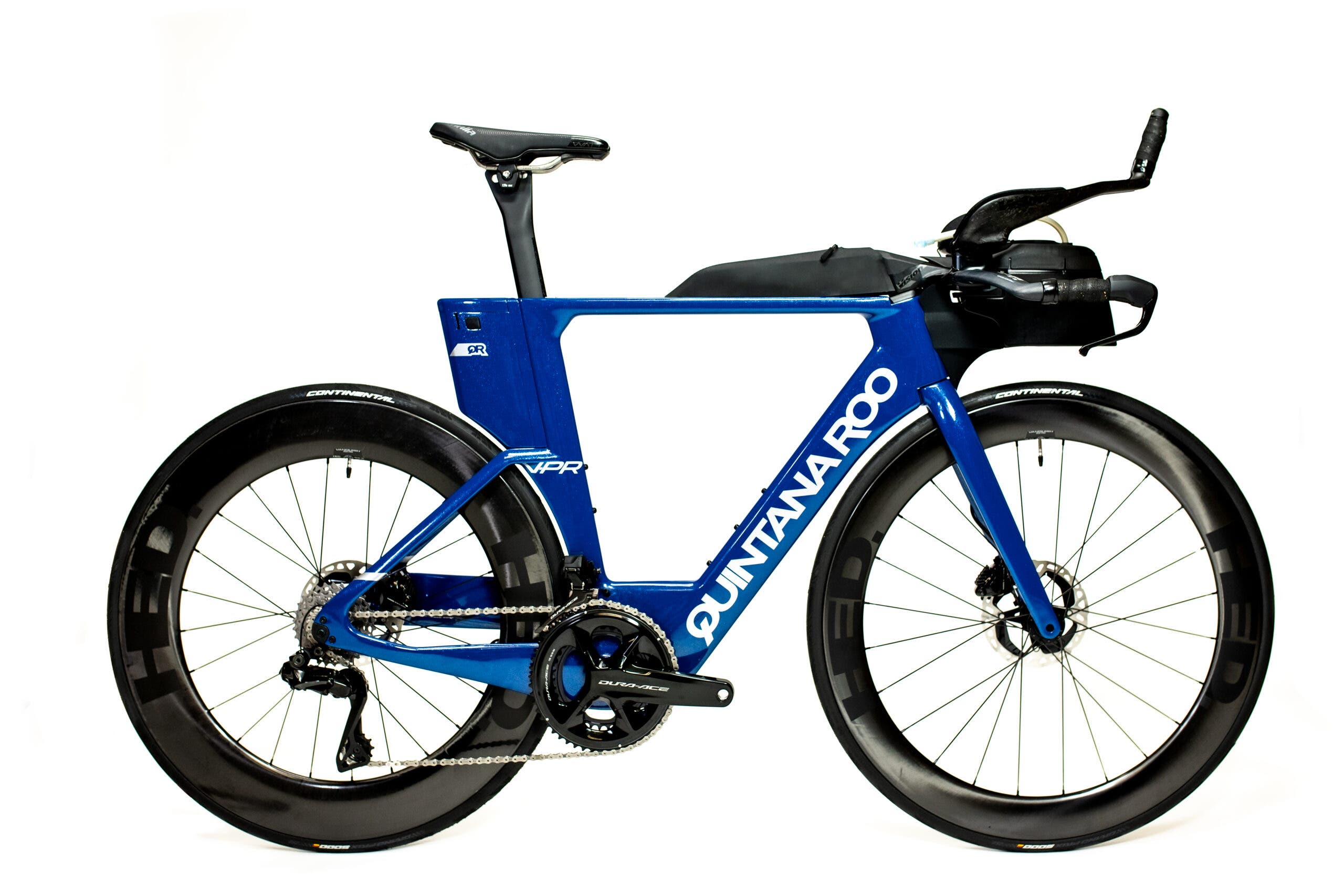The Quintana Roo V-PR: Finding Speed

The American brand Quintana Roo doesn’t have a regular schedule or yearly development program for bike launches, so when they announce a new model, you can be sure they went through a long process of designing, development, and real-world testing.
That’s what’s happened with the new V-PR, the latest addition to a historic brand that has developed triathlon-specific bikes since 1987. The V-PR is the evolution of two proven QR models: the PRsix and the PRfive. “We went through various generations of PRsix through the seasons,” explains Brad DeVaney, Product Design and Development at the American Bicycle Group, the company that owns QR. “It gained some functionality and some new component capabilities. Then the more affordable PRfive came about.”

For the next generation, QR felt the modern triathlon community needed something even more evolved and capable of satisfying their need for speed. “The V-PR is a totally new system,” says DeVaney. “We spent a tremendous amount of time on its creation. As a result, we were extremely sensitive to what the competition was doing.”
DeVaney explains that their intention was to provide a new state-of-the-art model that is very light weight, aerodynamic and furthers ride performance. To get to the final model the process has involved conceptual brainstorming while testing other models, computational fluid dynamics (CFD), 3D-printed and hand built prototype testing, wind tunnel comparisons, and real-world road testing. Plus an out-of-the-box approach that took inspiration from other speed sports, too.
“I’ve used motorsports concepts, including F1 and MotoGP racing, where redirection of airflow is paramount for performance gains,” says DeVaney. “The redirection of airflow in a bicycle is unique, because we have an exposed drivetrain. The challenge was to specifically minimize drag of the drivetrain.” In response to that problem, they decided to offset the down tube of the frame. In this design, the air penetrated by the front wheel (which would otherwise slam against the drivetrain) is redirected to the non-drive side, and the drag is significantly reduced.
In the quest to build a lightweight bike, the team leaned on innovation rather than compromising on stiffness. “Just seven weeks ago, we put another five-digit investment into this design to reduce the frame by 70 more grams,” DeVaney says, but that doesn’t mean cutting safety and performance. “If you look at the cross-sections, you’re going to see a completely different bike. Some of the tubes got drastically narrower,” and that was only possible by using the newest carbon fibers on the market which are super stiff and strong.

The V-PR will also serve as the platform for QR’s newest service, Fit-Ready. For an upcharge, customers will provide their existing fitter’s measurements to the QR team, who then build the bike to the customer’s exact fit, making the bike truly ready to ride the moment it’s delivered. “The V-PR will feel like a well-fitted and well-tuned bicycle. In musical terms: if a string is too tight, the music is bad, and the ears are screaming,” says DeVaney. “On a bike, you don’t want your body screaming at you because you made concessions to gain drivetrain efficiency, but you ruined the ability to travel 112 miles comfortably, and fast.”
QR set out to create a better bike, and they delivered. For a high performance, light and comfortable steed for your next triathlon, look no further than the V-PR.